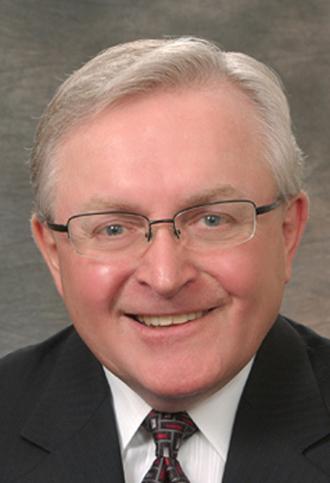Northeast President Intrigued By Obama’s Community College Tuition Initiative

January 15, 2015
NORFOLK – The president of Northeast Community College is among community college leaders across the nation giving a preliminary positive response to President Obama’s call to provide two years of free tuition at community colleges.
On Friday, the President unveiled the America’s College Promise proposal to allow “responsible” community college students to receive two years of free tuition, letting students earn the first half of a bachelor’s degree and earn skills needed in the workforce at no cost.
“Based on the initial release of this proposal, this could be exciting for community colleges and the nation,” said Dr. Michael Chipps, president of Northeast. “If you can have a better educated society, certainly there is no question that educators will be in favor of that. We will always be supportive of any initiative that will help educate and train our constituents with skill-sets that will allow them to not only be productive citizens, but be able to provide for themselves and their families.”
Chipps said, however, there is yet much more to understand about how the proposal could affect such areas as being able to effectively manage growing enrollments and how the proposal would work in relation to the future of funding community colleges by the states.
“I do see in the proposal that states would be required to maintain a certain level of funding, a portion of which would be based on performance, not just enrollment. However, I would be concerned that this proposal could mean that we could have a higher number of students without enough additional dollars to properly serve them.”
At Northeast Community College, tuition only accounts for 20-percent of the total cost of educating a student while property tax and state aid cover the remainder of the cost. Chipps said all of these would need to increase proportionately to meet the needs of additional students.
Chipps said if the President’s proposal is passed by Congress, students will have the opportunity to gain an education at least without tuition as part of their debt load, which could slow down and possibly reduce the nation’s already staggering $1.2 trillion student debt.
“Not knowing exactly how the President proposes to pay for this proposal is, of course, one of the primary questions that the federal government will need to address.”
According to a White House fact sheet, the America’s College Promise proposal would create a new partnership with states to help them waive tuition in high-quality programs for responsible students, while promoting key reforms to help more students complete at least two years of college. The fact sheet goes on to say that restructuring the community college experience, coupled with free tuition, can lead to gains in student enrollment, persistence, completion transfer and employment.
Under the President’s proposal, students must attend community college at least half-time, maintain 2.5 GPA, and make steady progress toward completing their program to qualify for the free tuition. If fully implemented, the proposal could save a full-time community college student an average of $3,800 in tuition per year. Approximately nine million students per year could benefit if they earn satisfactory grades and stay on track to graduate.
Chipps said the concept has meritorious intent about increasing the number of America’s college completers, which directly corresponds to help address the unrelenting call for a skilled workforce. He said the White House has asked community colleges to generate five million more graduates by the year 2020 and has sought ways to provide the mechanisms necessary to generate those numbers.
“The presidential Obama and Biden team have been strong advocates for community colleges. In my opinion, their interest has been largely driven by the Vice-President’s spouse, Dr. Jill Biden, who serves on the faculty at a community college. So, community colleges have had ‘the ear of the President’ for a number of years. For example, a few years ago, the President listened to community college executives at a White House summit as they explained how to change the nature of getting students educated and develop a highly skilled workforce.”
Chipps said whether this makes it all the way through Congress with its budgetary implications remains to be seen, but he appreciates the attention that the White House has been giving to one of the nation’s primary economic engines – America’s community colleges. “The past and present boards, administrators, faculty and staff have well-positioned Northeast to be part of this great new journey.”
Chipps said regardless of what happens with the President’s proposal, the nation and the world will suffer without properly trained workers.
“To my understanding, the President’s proposal has an overall price tag of $60 billion spread over ten years. It sounds like a lot of money; and it is, but what is the price of not being able to educate and deliver a highly skilled, globally competitive workforce?”







